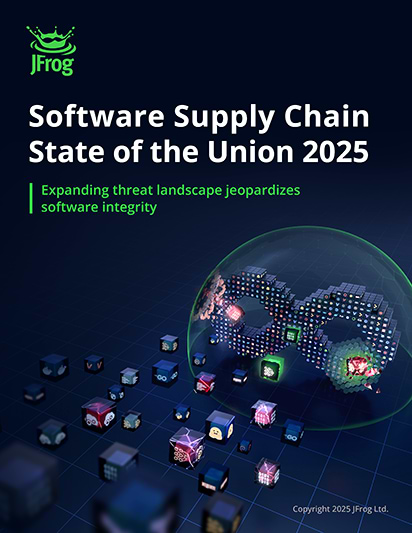Definition
Docker alternatives are containerization tools and platforms that provide functionalities similar to Docker, such as creating, managing, and running containerized applications. These tools offer unique features and benefits that can be suitable for specific use cases and develop environments.
Overview of Docker
What is Docker?
Docker is a popular platform for containerization, enabling developers to package applications and their dependencies into lightweight, portable containers. These containers can run consistently across different environments, from development to production, ensuring that applications behave as expected when running on the end user’s machine.
What is Containerization?
Containerization is a method of packaging applications and their dependencies into isolated units called containers. These containers share the host operating system’s kernel, making them lightweight and efficient. Containerization simplifies application deployment and ensures consistency across different environments.
The Role of Docker & Containerization
Containerization in Software Development
Containerization has become a cornerstone of software development, offering a way to package and deploy applications consistently and efficiently. It has revolutionized how developers build, test, and deploy applications, making it easier to manage complex, distributed systems.
Benefits of Containerization
Containerization involves packaging an application and its dependencies into a single unified container, which can run on any system that supports container architecture. The benefits of containerization include:
- Portability: Many current systems support containers, meaning that containerized applications can run on most systems with reliable and consistent behavior.
- Isolation: Each container runs in its own isolated environment, preventing conflicts between applications and limiting damage if they are breached.
- Efficiency: A container is lightweight and uses fewer resources by sharing the host system’s operating system kernel compared to a virtual machine which requires an entire operating system to function.
- Scalability: An architecture based on containers can be easily scaled up or down horizontally to meet changing demands.
Leading Containerization Tools
While Docker is the most well-known containerization tool, several other offerings have similar or a subset of Docker’s capabilities. Some of the leading containerization tools include Podman, Buildah, LXC, Rancher, Hyper-V and Windows Containers, runC, and containerd.
Leading Docker Alternatives
Here is a list and description of the more popular alternatives:
1. Podman
Podman is a daemonless container engine for developing, managing, and running OCI (Open Container Initiative) containers on Linux. It is a drop-in replacement for Docker and does not require a daemon to run containers, making it more lightweight and secure.
2. Buildah
Buildah is a tool for building OCI container images. It provides a command-line interface for creating, modifying, and running containers without the need for a Dockerfile. Buildah is particularly useful for automating container image builds.
3. LXC (Linux)
LXC (Linux Containers) is a lightweight virtualization technology that allows you to run multiple isolated Linux systems (containers) on a single host. LXC is a lower-level tool compared to Docker and is often used for more advanced containerization needs.
4. Rancher
Rancher is an open-source platform for managing Kubernetes and containerized applications. It provides a user-friendly interface for deploying and managing containers across multiple Kubernetes clusters, making it ideal for large-scale deployments.
5. Hyper-V and Windows Containers
Hyper-V and Windows Containers are Microsoft’s solutions for containerization on Windows. Hyper-V provides a lightweight virtualization layer, while Windows Containers run directly on the Windows operating system. These solutions are particularly useful for Windows-based applications.
7. runC
runC is a lightweight, command-line interface (CLI) tool for spawning and running containers according to the OCI specification. It is a low-level tool that can be used as a building block for higher-level containerization tools.
8. containerd
containerd is an industry-standard container runtime that is used by Docker and other containerization tools. It provides a simple, robust, and efficient way to manage containers and is often used in production environments.
Evaluating Docker Desktop Alternatives
As opposed to the classic “Docker” core platform, “Docker Desktop” is a more comprehensive and user-friendly application designed for Windows and macOS that offer additional features, ease of use and an end-to-end development environment. In terms of image management, Docker Desktop is an entirely self-contained local environment, while the classic Docker platform can be distributed across multiple development locations, requiring manual setup and configuration, and often involving setup of virtual machines for some operating systems. The main differences between Docker and Docker Desktop are:
Platform Compatibility – Docker can be installed on a wide range of operating systems, but requires a Linux virtual machine to run on Windows and MacOS, while Docker Desktop is designed specifically for Windows and MacOS.
User Experience – Docker is more command-line oriented and more suitable for developers, while Docker Desktop offers a graphical user interface and additional features that make it easy to manage.
Additional Features – While Docker provides core containerization functionality, Docker Desktop includes additional features like Kubernetes integration, Docker Compose, and resource management tools.
Development and Testing – Docker is suitable for production environments that need fine-grained control, as opposed to Docker Desktop which provides a more streamlined and user-friendly environment.
Besides these differences, when evaluating Docker Desktop tools it is also important to consider:
- Ease of Use and Installation
- Compatibility with Existing Workflows
- Community Support and Documentation
Comparison of Docker Alternatives
Here are some recommendations based on specific use cases:
- For Lightweight and Daemonless Containers: Podman and Buildah are excellent choices due to their lightweight nature and lack of a daemon.
- For Kubernetes Management: Rancher is a top choice for managing Kubernetes clusters and containerized applications.
- For Windows-Based Applications: Hyper-V and Windows Containers are ideal for running containerized applications on Windows.
- For Cloud-Native Applications: Azure Container Registry is a great option for managing Docker images in a cloud environment.
- For Low-Level Container Management: runC and containerd are suitable for developers who need fine-grained control over container operations.
Comparison Table
| Tool | Ease of Use | Compatibility | Community Support | Use Case |
| Podman | High | High | Moderate | Lightweight daemonless containers |
| Buildah | High | High | Moderate | Building OCI container images |
| LXC (Linux) | Moderate | High | Moderate | Advanced containerization requirements |
| Rancher | High | High | High | Kubernetes management |
| Hyper-V | High | High | Moderate | Windows-based applications |
| runC | Moderate | High | Moderate | Low-level container management |
| containerd | Moderate | High | High | Production container runtime |
Importance of Exploring Docker Alternatives
Individual Containerization Needs Assessment
Each organization has unique containerization needs, and what works for one may not work for another. Assessing your specific requirements, such as the size of your team, the complexity of your projects, and the environments in which you operate, is crucial for selecting the right tool.
Evolving Containerization Landscape
The containerization landscape is continually evolving, with new tools and technologies emerging regularly. Staying informed about the latest developments and exploring alternatives can help you find the best solution for your needs and stay ahead of the curve.
The JFrog Platform Supports Docker and its Alternatives
The JFrog Artifactory Docker Registry
Whether you use Docker or any of the alternative tools presented here, the JFrog Platform supports the storage and access management of your container images. JFrog Artifactory is a leading artifact repository manager that includes support for Docker registries. It supports a wide range of artifact types and integrates seamlessly with popular CI/CD tools.
Overview and Key Features
Artifactory lets you create any number of Docker registries per instance, enabling sharing of Docker images across the organization with fine-grained access control. It also offers proxy and cache remote Docker registries with remote repositories that aggregate local and remote Docker registries under a single virtual Docker registry to access all Docker images from a single URL.
Key features of the JFrog Artifactory Docker Registry include:
- Universal Repository Management: Supports various artifact types, including Docker images.
- Robust Security: Provides role-based access control, encryption, and compliance tools.
- Scalability: Designed to handle large-scale deployments and high-traffic environments.
Comparison with Docker Hub Usability & Performance
The JFrog Artifactory Docker Registry offers several advantages over Docker Hub, both in terms of usability and performance:
- Ease of Use: JFrog Artifactory provides a user-friendly interface and comprehensive documentation, making it easy to set up and manage Docker registries.
- Performance: Artifactory’s remote proxy capability for public registries like Docker Hub, efficient caching mechanisms, and scalable architecture ensure fast and reliable delivery of Docker artifacts, even under heavy loads.
- Integration: Artifactory integrates seamlessly with popular CI/CD tools, enhancing the overall development and deployment process of Docker packages.
Advantages for Large-Scale Applications
For large-scale applications, the JFrog Artifactory Docker Registry offers several advantages including:
- Centralized Management: A single, unified platform for managing all artifacts, including Docker images.
- Security and Compliance: Advanced security features and compliance tools ensure that Docker artifacts are secure and meet regulatory requirements.
- Scalability: Designed to handle large-scale deployments consisting of hundreds of developers and thousands of packages, making it ideal for enterprise environments.
The JFrog Platform
The JFrog Platform is a comprehensive solution for managing the entire software development lifecycle. It includes tools for artifact management, build automation, and release management, all integrated into a single, unified platform.
JFrog Artifactory
JFrog Artifactory is a powerful artifact repository manager that supports a wide range of artifact types, including Docker images. Its advanced features, such as universal repository management and robust security, make it a top choice for organizations of all sizes.
Learn More…
To learn more about the JFrog Platform and how it can enhance your software development operations, please visit our website, take a virtual tour, or set up a one-on-one demo at your convenience.







